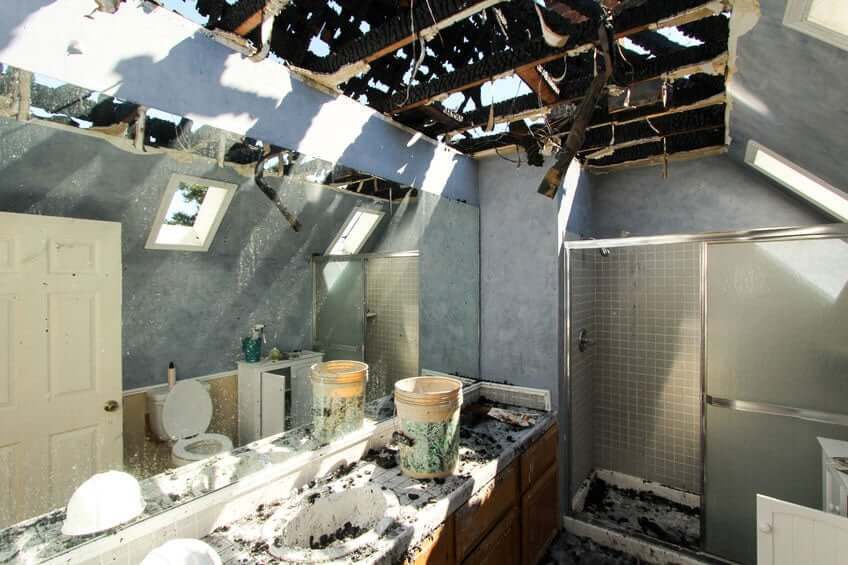
Fires in hospitals and healthcare facilities pose unique challenges due to the sensitive nature of these environments. Not only is there a need to protect life, but also to safeguard critical medical equipment and maintain a sterile environment. The immediate aftermath of a fire can disrupt operations, affecting patient care and hospital functionality.
Recovery from fire damage requires a thoughtful approach. It involves ensuring that the building is safe for patients and staff, managing smoke odor and residue, and deciding how to restore essential medical equipment and infrastructure. Acting quickly helps to minimize downtime and ensures that the facility can resume its vital operations as soon as possible.
Understanding fire recovery in healthcare settings is essential for hospital administrators and staff. By equipping themselves with the right knowledge and skills, they can face these situations confidently and ensure a swift and efficient recovery process. This proactive approach helps maintain the trust of patients and staff, ensuring that a high standard of care is readily restored.
Evaluating Fire Damage and Ensuring Safety
Safety first. That’s the golden rule when tackling fire damage in healthcare facilities. Begin by assessing the extent of the fire’s impact on different parts of the building. Identifying which areas are safest to enter and which ones are too hazardous is crucial. Be on the lookout for structural issues like weakened ceilings or floors, which can pose significant dangers.
Start your evaluation by organizing a walkthrough with safety experts. Make sure that electricity and gas are safely turned off to prevent further risks. Focus on discovering unstable areas by checking for cracks or visible signs of damage. These initial assessments help decide if the building is safe for entry and what areas should be sectioned off.
Prioritize looking for soot, smoke residue, and lingering odors, especially in sensitive areas like patient rooms and operating theaters. Hospitals house delicate medical equipment, so these places need thorough checks lest they carry health risks. Keep a running log of all equipment and areas affected by soot or flames, helping guide restoration teams on what needs urgent attention.
Ensuring safety at every step minimizes additional hazards and sets the stage for successful recovery. Taking careful stock now helps form a solid action plan, keeping everyone involved mindful of potential risks and needs.
Prioritizing Cleanup and Smoke Removal
Fire’s worst side effect isn’t just the damage—it’s the smoke and soot left behind. This residue can harm structures and lead to health problems if not dealt with fast. Tackling cleanup and smoke removal should be at the top of the to-do list.
Start by increasing ventilation. Open windows and doors to let fresh air in, lessening smoke odors. Set up exhaust fans facing outward to help clear the air quickly. Proper airflow speeds up clearing airborne contaminants and reduces odors.
List and sort tasks to address different aspects of cleanup efficiently. Use specialized vacuums with HEPA filters to capture soot particles. Regular vacuums might release particles back into the air, so using the right equipment is vital. Clean up walls, floors, and horizontal surfaces with appropriate cleaning agents designed for smoke residue.
Removing smoke odor can be tricky, requiring advanced odor elimination techniques. Consider thermal fogging or ozone treatments to neutralize persistent smells. These methods reach into small crevices, clearing out hidden smoke particles that might linger otherwise.
Effective cleanup prevents long-term damage and health hazards, focusing on the air and surfaces. By attacking soot and smoke right away, facilities can quickly move forward to the next steps while ensuring a healthier environment for patients and staff.
Restoring Medical Equipment and Infrastructure
Fire can cause significant damage to the costly and vital medical equipment and infrastructure in healthcare facilities. Restoring these assets is crucial to resuming patient care and operations efficiently. Start by assessing which equipment is salvageable; this requires coordination with manufacturers or specialists familiar with the sensitive nature of this gear.
For slightly damaged equipment, thorough cleaning and testing are a priority. Engage professionals to ensure that all devices function normally and safely before reuse. Detailed checks prevent future breakdowns and ensure patient safety, confirming that everything is working to specification.
Infrastructure repair involves restoring functional parts of the building, like wiring and plumbing, that might have suffered in the fire. Address internal systems that support operations, focusing on those that directly impact health and safety, such as ventilation systems. Restoring these systems is crucial for maintaining a healthy environment for both patients and staff.
Special care should be taken when dealing with electronic devices and hospital machinery to prevent further damage. After initial repairs, conduct safety checks and calibration tests. These steps ensure the equipment operates effectively and accurately, promoting a secure environment for care delivery.
Implementing Fire Prevention and Safety Protocols
After handling immediate fire damage, the next focus is on future fire prevention and safety protocols. These measures prepare facilities to handle potential threats swiftly and efficiently, minimizing damage and safeguarding life.
Start by reviewing and updating current fire safety plans. Conduct fire drills regularly to keep staff prepared for emergency situations. Practicing these protocols ensures everyone knows evacuation routes and procedures, which saves lives during real crises.
Install advanced fire detection and suppression systems. Modern equipment, like smoke detectors and sprinklers, helps catch fires early, preventing them from spreading. Regular maintenance checks for these systems are vital to guarantee functionality when they are most needed.
Training staff members in fire safety keeps them knowledgeable about using extinguishers and executing emergency procedures. Offering regular workshops or refresher courses ensures that fire safety becomes part of the facility’s culture.
Develop plans to handle hazardous materials safely. Understanding how to manage and store these substances reduces fire risks significantly. Ensuring proper labeling and storage keeps potential dangers under control.
Conclusion
Handling fire damage in healthcare facilities involves more than just fixing what’s burned. It’s about preparing for the future with robust safety protocols and effective restoration strategies. By focusing on recovery and prevention, facilities can minimize downtime and continue providing critical care to their communities.
To ensure effective recovery and maintain safety standards, Restoration Masters offers expert services tailored to the unique needs of healthcare facilities. Trust us to guide your fire damage restoration journey, prioritizing safety and efficiency every step of the way. Reach out today to secure your facility’s future with our knowledgeable team by your side.





